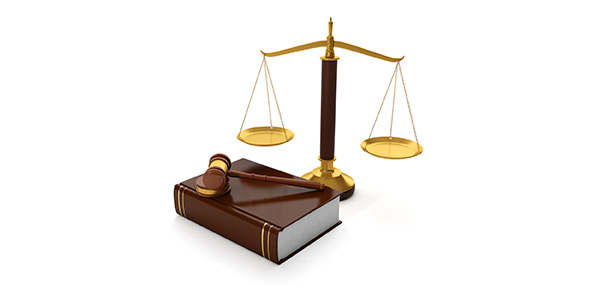Related Flashcards
Related Topics
Cards In This Set
| Front | Back |
|
Dynamic vs. Constrained views of the court
|
Dynamic: courts are vigorous and effective proponents of change. courts have big impact on social change. can change through: 1. judicial: holding up a law or putting law down and 2. extrajudicial: ie. symbolic authority, push congress to change, inspire public
Constrained: Courts are unable to produce social changes on their own. legislature still has to create budgets for court order and court lacks enforcement. "courts have neither the power of the purse nor the sword" |
|
14th amendment
|
All people have right to the equal protection of the law
|
|
Mendez v. Westminster: background/the schools
|
Refers to 14th amendment. in CA - discrimination vs mexican americans in other mexico bordering states. segregation of mexican and white students, same deal as south - worse conditions, pay in mexican american schools. reason for segregation was because mexican americans did not speak fluent english, intelligence tests cited as evidence they were less intelligent, said okay was separat because mexican americans more likely to go into vocational careers so their schools focused on vocations. plaintiffs wanted to enroll children in white school, but were denied because of their color
|
|
Mendez v. Westminster: the case
|
David Marcus took the case - decided best to go to federal court because if sued in state, state could overrule court by challenging law to allow for segregation. Marcus wanted to take on 14th amendment and challenge whether mexicans were separate race - by census were considered white, so said plessy v. ferguson did not apply because was segregation within race. his argument: denial of equal protection happening to people who were white. Marcus brought in educators who said influence segregation had was very negatie, led to feelings of inferiority, lasted with children forever. also argued only way to learn foreign language is to be integrated (same arguments were then used in brown v. board of ed.). Marcus wins, ruling only binding in 9th circuit court. judge says equal regardless of LINEAGE - plessy v. ferguson does not apply bc that deals with race. decision appealed to circuit court, upheld. NAACP submited amicus brief/friends of hte court brief to court saying why marcus should win. CA did not appeal again, did not go to supreme court
|
|
Mendez v. Westminster outcome:
|
1948 survey: 78% responded district segregated, after this case only 18% of districts segregated. Sylvia Mendez dedicated life to informing public of case. in 2010 Obama gave her presidential medal of freedom. case also has its own postage stamp
|
|
Charles Houston
|
Born in 1885 into privileged family - father was lawyer, mother was teacher. went to Amherst college, graduated in 1915. volunteered for WWI, served in segregated army - was black officer. went back to U.S. 1920 he went to Harvard Law, was one of few black lawyers in the south 1929 appointed Dean of Howard University Law School - made school better/more competitive. NAACP created - founded in 1909, C.H. appointed special council in 1934. Houston spotted weakness in Jim Crow, wanted to fight discrimination in education. proposed 2 stage attack: first set precedent of equal schools (demand equalization of salaries, facilities in school). went to document inequalities. filed 1st case v. university of maryland law school in Murray v. Maryland -murray was denied by race (he won - university ordered to accept murray). next tried to equalize teachers' salaries. 1939 - enough cases by C.H. to force equalizaiton of all teachers' salaries in Maryland. next: Gaines v. missouri - tried to get gaines admitted, court denied. he then appealed to supreme court who rules with gaines.. 1940 - left NAACP, Thurgood Marshall took over. C.H. set eyes on housing an transportation (preferential hiring in railway industry) - won case. died of heart failure in 1950
|
|
History of segregation
|
Jamestown VA 0 1619 - 20 african slaves sold. 1776 - colonists declared independence, all men created equal (but not slaves). 1857 - supreme court reaffirmed dread scott decision - exclusion of blacks from constitution, which led to civil war. north victory, 13th amendment abolished slavery and 14th said all citizens right to equal protection and 15th black right to vote. 1887 - southern states passed new laws - gave constitutional consent to segregation. 1896 - plessy v. ferguson. 1895 - separate railroad cars for blacks and white in Louisiana, led to plessy v. ferguson which convicted plessy and declared separate but equal, was then expanded outside of trains. 21 states passed segregation laws under plessy v. ferguson. jim crowe era - time of violence, lynching
|
|
C.H. tactic
|
Architect of strategy used in brown v. board of ed. to overturn plessy v. ferguson (carried out by thurgood marshall). C.H. strategy: chip away at precedent so supreme court could overturn plessy: 1. go after equality - make it so expensive to be equal (same salaries, buildings, etc.) and 2. go after separate - separate is violation of equal protections clause (14th amendment)
|
|
Limits: The Constrained Court
|
1. Legal limits: constitution outlines limited set of rights. not a lot of rights are clearly stated, especially compared to other countries. no gurantee to housing, food, clean environment. have to find ways to extend rights that exist in constitution. another legal limit: when you can bring a problem to court - court needs to wait for case or controversy before can make decision
2. Political limits: courts aren't as independent as they seem - especially supreme court - justices are appointed (political) - courts are not completely independent - lifetime tenure. another political limit: legislature can pass law to overrule supreme court ruling - change to align with court objections. court does not stray from popular opinion 3. Implementation limits: "courts have neither the power of the purse nor the sword". they have no money or enforcement power. decisions are not self-executing, require help. example: obamacare - congress refused to fund after supreme court rules was constitutional. lower level courts may misinterpret, not implement, not understand higher court decisions and higher court won't know was not implemented until someone sues. |
|
What does rosenberg suggest?
|
He suggests the power of the court to create social change is limited
|
|
The Dynamic Court View
|
Corts are insulated from politics (not elected) so can make constroversial decisions. access to court does not depend on economic or political resources (anyone can access). courts are better at gathering and assessing all relevant information - when courts make decisions have to justify with legal arguments and facts. court decisions remind us of our aspirations as a society and educate the public - education can spur public to action.
|
|
Rosenberg Brown v. Board question:
|
Did the court's ruling in Brown cause the integration of public schools in the south? - he says no
|
|
Brown v. Board of education background
|
The Brown decision is actually the decision for four cases combined: davis v. county school board of prince edward county (VA), Gebhart v. Belton (DE), Briggs et al, v. Elliot (SC), Brown v. Board of Education of Topeka, Kansas. all cases included black studnets denied admission to white schools because of segregation. schools were actually equal in all cases, so had to try and fight separate, not equal. in all 4 cases the lower court ruled plessy v. ferguson still stands.
|
|
Brown v. Board of Education (I)
|
The legal question: does segregation of children in public schools based on race deprive minorities of equal protection of laws guranteed by 14th amendment? The arguments: 1st oral argument: Dec. 1952 before Chief Justice Vinson and rest of supreme court. court was deadlocked, could not decide so said wanted to hear about history of 14th amendment to delay, asked for rearguments about legislative intent of 14th amendment. felix fraksfurter was proponent of overturning plessy and was on supreme court, he was advisor of C.H. at harvard Law. Vincent then unexpectedly dies, replaced by Earl Warren who supports overturning plessy, unlike Vincent. #2 arguments: 1953 - warren handwrote opinion, took version of written opinion to every person on court, worked hard to get no dissent because did not want to give ammunition to other side. convinced everyone to sign on, 9-0 opinion decision in may 1954
|
|
Brown v. Board (I) decision:
|
Despite equalization of schools by objective factors, intangible issues foster and maintain inequality. racial segregation in public education has detrimental effect on minority children because breeds feeling of inferiority. conclude in public education, separate but equal has no place.
|





